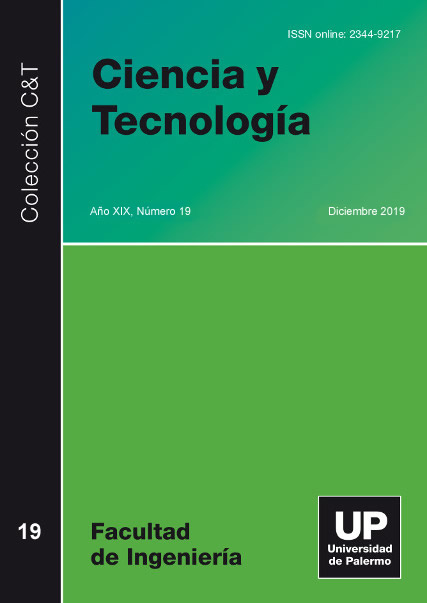Diagnóstico de Enfermedades Card´ıacas con los algoritmos supervisados Naives Bayesian
Resumen
Las enfermedades cardíacas son la principal causa de muerte en la actualidad. Este paper contrasta la performance de los diferentes algoritmos supervisados de Machine Learning, que tienen aplicaciones en el a´rea de la medicina, con los algoritmos supervisados Naives Bayes para ayudar a clasificar pacientes propensos a sufrir enfermedades cardíacas. Como fuente de datos se usan 303 instancias de pacientes con diferentes características que fueron analizados al procesar los datos con los respectivos algoritmos. Los resultados con el algoritmo de Naives Bayes son pro- metedores, obteniendo una precisio´n del 86,81 %, usando la fuente de datos mencionada. Esta familia de algoritmos tiene un mejor rendimiento comparado con otros algorit- mos de Machine Learning como neural networks, arrojando resultados ma´s precisas que las esperadas de me´dicos humanos.
Descargas
Citas
G. F. Tomaselli and D. P. Zipes, “What causes sudden death in heart failure?” Circulation research, vol. 95, no. 8, pp. 754–763, 2004.
V. Autores, “Risk factors for heart diseases,” urlhttps://www.webmd.com/heart-disease/risk-factors-for-heart- disease.
R. Vijayakrishnan, S. R. Steinhubl, K. Ng, J. Sun, R. J. Byrd,
Z. Daar, B. A. Williams, C. Defilippi, S. Ebadollahi, and W. F. Stewart, “Prevalence of heart failure signs and symptoms in a large primary care population identified through the use of text and data mining of the electronic health record,” Journal of cardiac failure, vol. 20, no. 7, pp. 459–464, 2014.
R. C. Deo, “Machine learning in medicine,” Circulation, vol. 132, no. 20, pp. 1920–1930, 2015.
J. Khan, J. S. Wei, M. Ringner, L. H. Saal, M. Ladanyi, F. Wes- termann, F. Berthold, M. Schwab, C. R. Antonescu, C. Peterson et al., “Classification and diagnostic prediction of cancers using gene expression profiling and artificial neural networks,” Nature medicine, vol. 7, no. 6, p. 673, 2001.
A. Rajkumar and G. S. Reena, “Diagnosis of heart disease using datamining algorithm,” Global journal of computer science and technology, vol. 10, no. 10, pp. 38–43, 2010.
I. H. Witten, E. Frank, M. A. Hall, and C. J. Pal, Data Mining: Practical machine learning tools and techniques. Morgan Kaufmann, 2016.
C. K. GN, “Machine learning types and algorithms,” urlhttps://towardsdatascience.com/machine-learning-types-
and-algorithms-d8b79545a6ec.
J. R. Quinlan, “Induction of decision trees,” Machine learning, vol. 1, no. 1, pp. 81–106, 1986.
H. Zhang, “The optimality of naive bayes,” AA, vol. 1, no. 2, p. 3, 2004.
G. I. Webb and M. J. Pazzani, “Adjusted probability naive bayesian induction,” in Australian Joint Conference on Artificial Intelligence. Springer, 1998, pp. 285–295.
Q. Kuang and L. Zhao, “A practical gpu based knn algorithm,” in Proceedings. The 2009 International Symposium on Computer Science and Computational Technology (ISCSCI 2009). Citeseer, 2009, p. 151.
I. Kononenko, “Machine learning for medical diagnosis: history, state of the art and perspective,” Artificial Intelligence in medi- cine, vol. 23, no. 1, pp. 89–109, 2001.
M. Clinic, “Enfermedad cardiaca,” https://www.mayoclinic.org/es-es/diseases-conditions/heart- disease/symptoms-causes/syc-20353118.
M. N. Today, “Heart disease: Types, causes and treatments,” urlhttps://www.medicalnewstoday.com/articles/237191.php.
S. U. Amin, K. Agarwal, and R. Beg, “Genetic neural network ba- sed data mining in prediction of heart disease using risk factors,” in 2013 IEEE Conference on Information & Communication Technologies. IEEE, 2013, pp. 1227–1231.
T. G. Dietterich, “Ensemble methods in machine learning,” in International workshop on multiple classifier systems. Springer, 2000, pp. 1–15.
D. W. Hosmer Jr, S. Lemeshow, and R. X. Sturdivant, Applied logistic regression. John Wiley & Sons, 2013, vol. 398.
I. Rish et al., “An empirical study of the naive bayes classifier,” in IJCAI 2001 workshop on empirical methods in artificial intelligence, vol. 3, no. 22, 2001, pp. 41–46.
M. J. Mizianty, L. A. Kurgan, and M. R. Ogiela, “Discretization as the enabling technique for the naive bayes and semi-naive bayes-based classification,” The Knowledge Engineering Review, vol. 25, no. 4, pp. 421–449, 2010.
O. Harrison, “Machine learning basics with the k-nearest neighbors algorithm,” https://towardsdatascience.com/machine- learning-basics-with-the-k-nearest-neighbors-algorithm- 6a6e71d01761.
C. Nicholson, “A beginner’s guide to neural networks and deep learning,” https://pathmind.com/wiki/neural-network.
M. L. Repository, “Cleveland database - heart disease dataset,” urlhttp://archive.ics.uci.edu/ml/datasets/Heart+Disease.
Los artículos publicados en la Revista Ciencia y Tecnología son de exclusiva propiedad de sus autores. Las opiniones y el contenido de los mismos pertenecen a sus autores, declinando la Universidad de Palermo toda responsabilidad por los derechos que pudiera derivarse de la lectura y/o interpretación del contenido de los artículos publicados.
No se autoriza la reproducción, utilización ni explotación por parte de ningún tercero de los artículos publicados. Sólo se autoriza su uso para fines exclusivamente académicos y/o de investigación.









